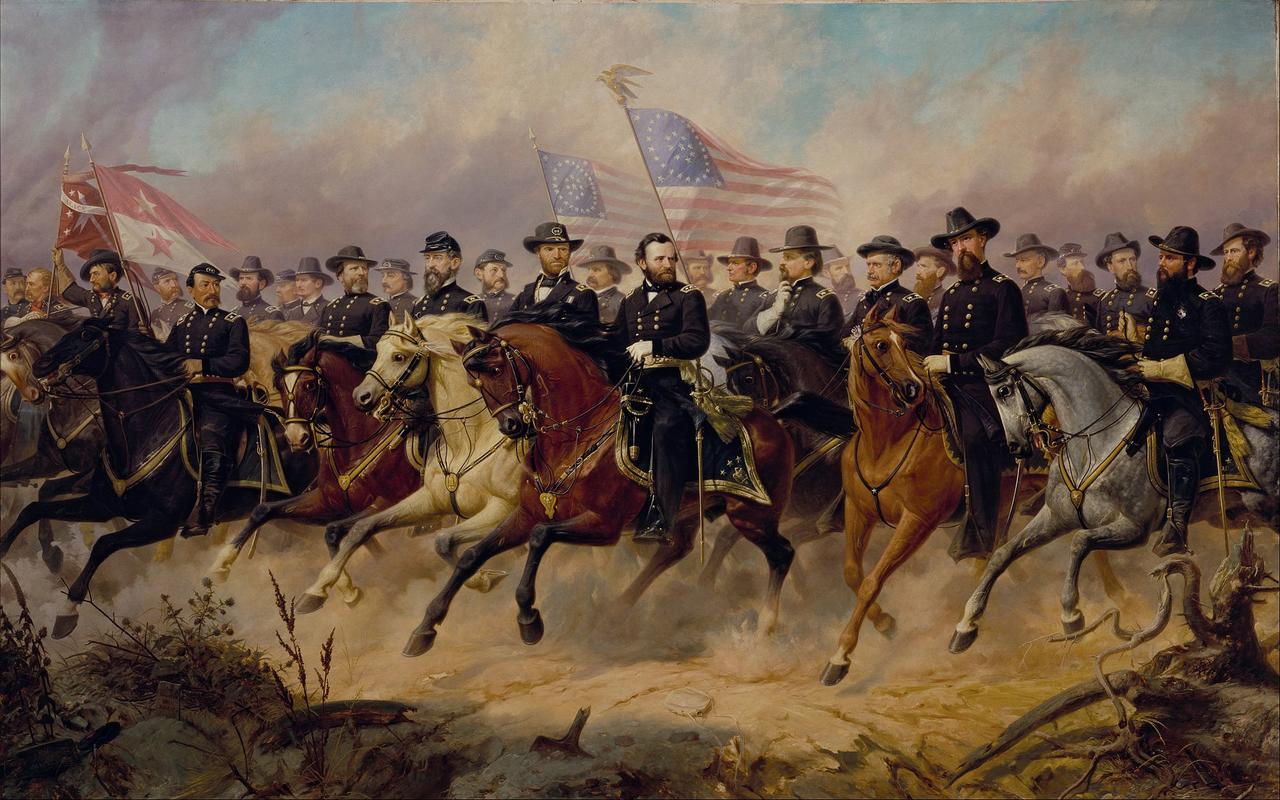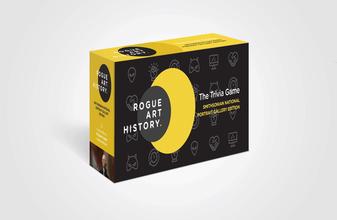More about Grant and His Generals
- All
- Info
- Shop

Contributor
Grant and his Generals is a triumphant piece of propaganda in the most positive sense of the word.
It's a heroic scene in which the generals of Ulysses S. Grant in the U.S. Civil War are serving together, looking energetic, full of vigor, and almost happy, even though they are in the middle of a gruesome and horrible war over property, slavery, finance and the borders of the United States. As a painting with the intended result of making the public feel better about the unthinkably bad human cost of war, you can place Grant and his Generals directly into the tradition emanating from Jacques-Louis David, the explicitly propaganda-driven classical painter.
Grant and his Generals is not a work of realism, except for the dynamic, beating hooves which echo the work of Theodore Gericault. It is meant to be an icon, displayed near doorways, proclaiming the unity of the North and of the U.S. These men, it says, made your life possible.
The Norwegian immigrant's vision became a central symbol of the postwar period, selling large numbers of prints for homes. "The fact that it was turned into a print for a mass market shows how popular the generals were. They were heroes who had saved the Union." The propaganda value was not dampened by the fact that the artist was very much a Norwegian, who spent most of his life outside of the United States.
One of the unique and wonderful things about the adventurer-painters of the 19th century U.S., from George Catlin to John Gadsby Chapman, was their ability to publish, after the fact, their stories of producing their famous paintings. It's not something we see often in 2019, especially in quarters dominated by Hammons-esque performance art, competing for maximum opacity. And it might be hard to make your own painting sound better than it is.
For a great read, check out Balling's story of meeting Grant and discussing the production of Grant and his Generals. You can find a chunk of it below, in the Sartle Library. It is also preserved in part in Marc Pachter's A Gallery of Presidents, which mentions that Balling noticed Grant's informality and "big slouch hat." Balling says that Grant showed the artist his horses, including a particularly beautiful one named Egypt, which Balling chose for the painting. Another horse was named Jeff Davis, after Grant's Confederate adversary.
Sources
- George, Enzo. The Civil War. New York: Cavendish Square Publishing, LLC, 2014.
- Kagan, Neil, and Stephen Garrison Hyslop. Smithsonian Civil War: Inside the National Collection. Washington, D.C.: Smithsonian Institution, 2013.
- "Ole Peter Hansen Balling." Ulysses S. Grant Homepage. https://www.granthomepage.com/intballing.htm.
- Pachter, Marc. A Gallery of Presidents. Washington, D.C.: Published for the National Portrait Gallery by the Smithsonian Institution Press, 1979.
- Waugh, Joan. U. S. Grant: American Hero, American Myth. Chapel Hill, North Carolina: Univ of North Carolina Press, 2009.













This painting has such incredible detail. I love how the artist captures the action of war, with the flags flapping and the horses racing across the field.